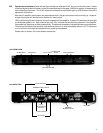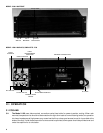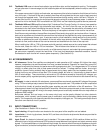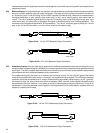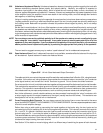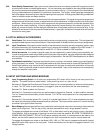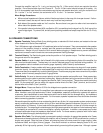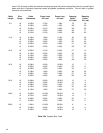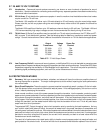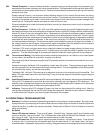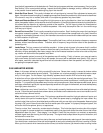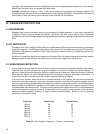19
You may have some problems finding the larger value capacitors in the preferred film-type construction. If
necessary, several can be paralleled; simply add the individual capacitances together to get the total rating. You
will probably have to locate non-polar electrolytics for values greater than 10-20uf.
4.4 POWER CAPACITY
All speakers have a maximum long-term power limit which is determined by the temperature rise of the voice coil.
The speaker can withstand short peaks above this level, since the voice coil takes a little while to overheat. The
time lag depends on the size and mass of the voice coil and ranges from a fraction of a second to several seconds.
The required speaker rating for a given amplifier power depends on the type of program material. Extreme cases
such as lead guitar work may require speaker ratings of twice the RMS power of the amplifier to withstand the full
peak power. The average power of signals where some attempt is made to prevent overdrive distortion will be
less than the amplifier RMS rating; how much less depends on the dynamic range and headroom allowance. In
live-performance situations where feedback and high-energy artists can push the system to its limits, it would
probably be wise to match the RMS ratings of the speakers and the amplifiers.
4.5 POWER LIMITING
There are several ways to limit the power to safe levels without operator intervention. Some speaker systems have
protective circuits, or at least fuses. Fuses can be added which will blow in case of overloads; the problem is to
select a fuse with the correct time lag and overload characteristics to match the speaker limitations. The speaker
manufacturer is in the best position to specify these values; the following table is presented for rough guidance
only. The fuse values shown are calculated for fast-blow fuses, which will carry 135% of their rating for an hour,
and which blow within 1 second at 200% current. The RMS power rating shown is correlated to 135% of the fuse
current. The fuse voltage is not critical; 32 volt fuses should have the lowest resistance which will avoid loss of
damping factor.
RMS Power 4-ohm 8-ohm 16-ohm
Load Load Load
30w 2.0 1.5 1.0
50w 2.5 1.6 or 2.0 1.25
75w 3.0 2.0 or 2.5 1.5
100w 4.0 2.5 1.6 or 2.0
200w 5.0 3.0 or 4.0 2.5
400w 7.5 5.0 3.0 or 4.0
Table 4.5 Fuse Ratings (values in amps)
The power may also be limited with active circuitry. QSC offers a plug-in Octal PowerLimit Module (PL-1) which can be
adjusted to put a ceiling on the power level; the circuit acts to reduce volume as necessary to keep the power below the
desired ceiling. The PL-1 lets you set the power ceiling independently for each channel, without the interruptions of fuse
protection. Please contact the QSC Sales Department for specific information on the Octal Modules.
4.6 USER RESPONSIBILITY
Remember that your Series One amplifier has extra peak power (dynamic headroom) in reserve. Observe the hook-up
and operating precautions. QSC is not liable for any damage to loudspeakers caused by overpowering, wrong-frequency
operation or electronic faults.



